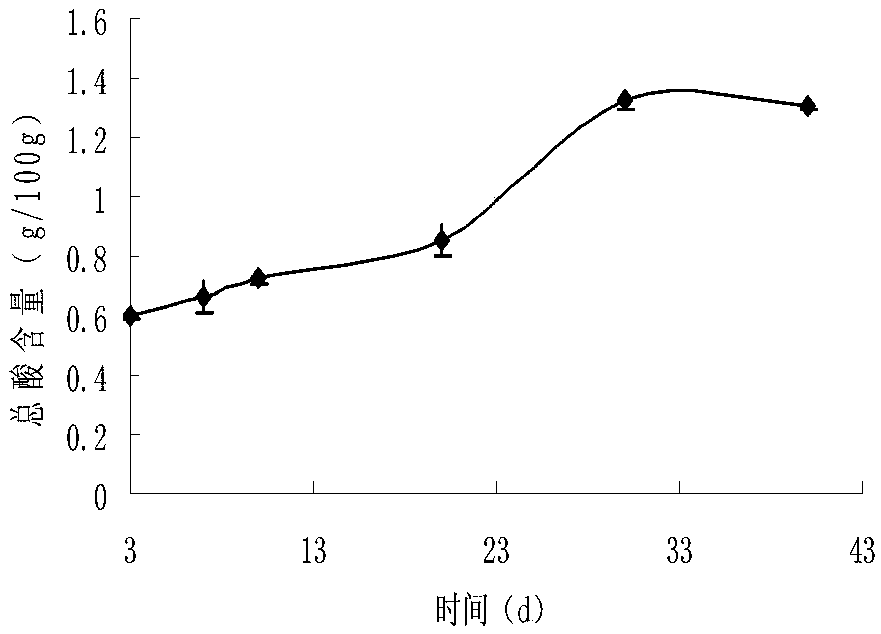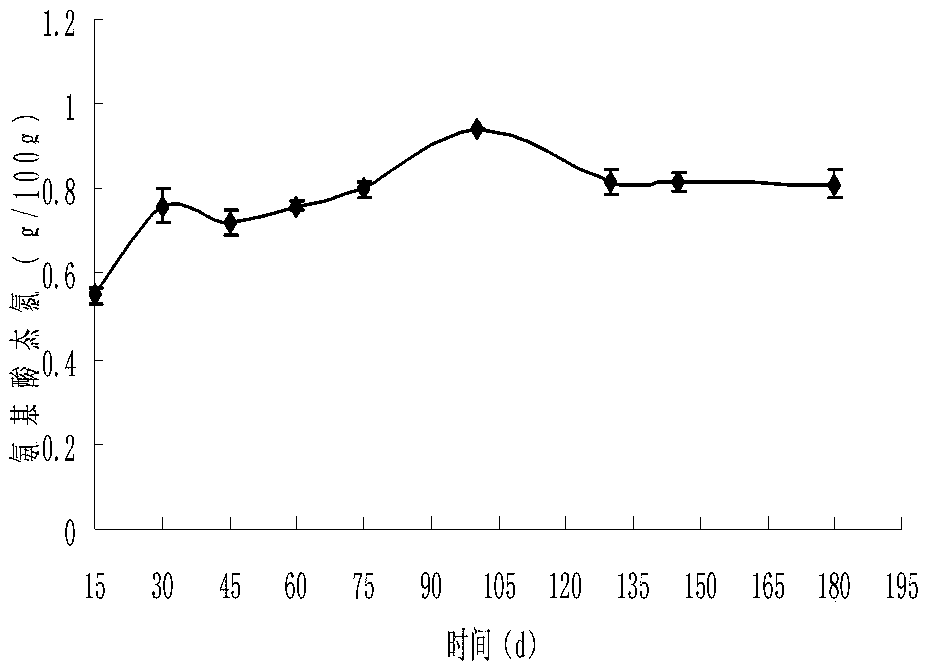Method for preparing soybean paste by using high-salt liquid soy sauce residues
A technology of high-salt dilute soy sauce and soybean paste, which is applied in food science and other fields, can solve the problems of low added value of products, high cost of brewing soybean paste, and increased energy consumption, so as to achieve controllable production quality and improve overall technology and management level, cost reduction effect
- Summary
- Abstract
- Description
- Claims
- Application Information
AI Technical Summary
Problems solved by technology
Method used
Image
Examples
Embodiment 1
[0029] A method for making soybean paste by using high-salt dilute soy sauce residue, the steps are as follows:
[0030] (1) Remove impurities from soybeans, wash and soak soybeans for 8-12 hours;
[0031] (2) Drain soybeans, steam at 0.15-0.2 MPa for 30 minutes, steam high-salt dilute soy sauce residue at 0.1-0.15 MPa for 15-20 minutes, mix the steamed soybeans with high-salt dilute soy sauce immediately, and lower the stirring temperature to 45- 40°C, wherein the mass ratio of the soybeans to the high-salt dilute soy sauce residue is 2:1;
[0032] (3) Inoculate Aspergillus oryzae koji essence according to 0.3-0.5% of the total weight of raw materials, stir and mix, and put it into a 30°C constant temperature incubator for stacking culture;
[0033] (4) When the culture time is 15-18 hours, turn over the koji for the first time, evenly mix and disperse the koji materials that have been accumulated and cultivated before, and continue to spread the culture at 30°C. After cult...
Embodiment 2
[0038] A method for making soybean paste by using high-salt dilute soy sauce residue, the steps are as follows:
[0039] (1) Remove impurities from soybeans, wash and soak soybeans for 8-12 hours;
[0040] (2) Drain soybeans, steam at 0.15-0.2 MPa for 30 minutes, steam high-salt dilute soy sauce residue at 0.1-0.15 MPa for 15-20 minutes, mix the steamed soybeans with high-salt dilute soy sauce immediately, and lower the stirring temperature to 45- 40°C, wherein the mass ratio of the soybeans to the high-salt dilute soy sauce residue is 2.5:1;
[0041] (3) Inoculate Aspergillus oryzae koji essence according to 0.3% of the total weight of raw materials, stir and mix well, and put it into a 30°C constant temperature incubator for stacking culture;
[0042] (4) When the culture time is 15-18 hours, turn over the koji for the first time, evenly mix and disperse the koji materials that have been accumulated and cultivated before, and continue to spread the culture at 30°C. After c...
Embodiment 3
[0047] A method for making soybean paste by using high-salt dilute soy sauce residue, the steps are as follows:
[0048] (1) Remove impurities from soybeans, wash and soak soybeans for 8-12 hours;
[0049] (2) Drain soybeans, steam at 0.15-0.2 MPa for 30 minutes, steam high-salt dilute soy sauce residue at 0.1-0.15 MPa for 15-20 minutes, mix the steamed soybeans with high-salt dilute soy sauce immediately, and lower the stirring temperature to 45- 40°C, wherein the mass ratio of the soybeans to the high-salt dilute soy sauce residue is 3:1;
[0050] (3) Inoculate Aspergillus oryzae koji essence according to 0.5% of the total weight of raw materials, stir and mix well, and put it into a 30°C constant temperature incubator for stacking culture;
[0051] (4) When the culture time is 15-18 hours, turn over the koji for the first time, evenly mix and disperse the koji materials that have been accumulated and cultivated before, and continue to spread the culture at 30°C. After cul...
PUM
 Login to View More
Login to View More Abstract
Description
Claims
Application Information
 Login to View More
Login to View More - R&D
- Intellectual Property
- Life Sciences
- Materials
- Tech Scout
- Unparalleled Data Quality
- Higher Quality Content
- 60% Fewer Hallucinations
Browse by: Latest US Patents, China's latest patents, Technical Efficacy Thesaurus, Application Domain, Technology Topic, Popular Technical Reports.
© 2025 PatSnap. All rights reserved.Legal|Privacy policy|Modern Slavery Act Transparency Statement|Sitemap|About US| Contact US: help@patsnap.com



